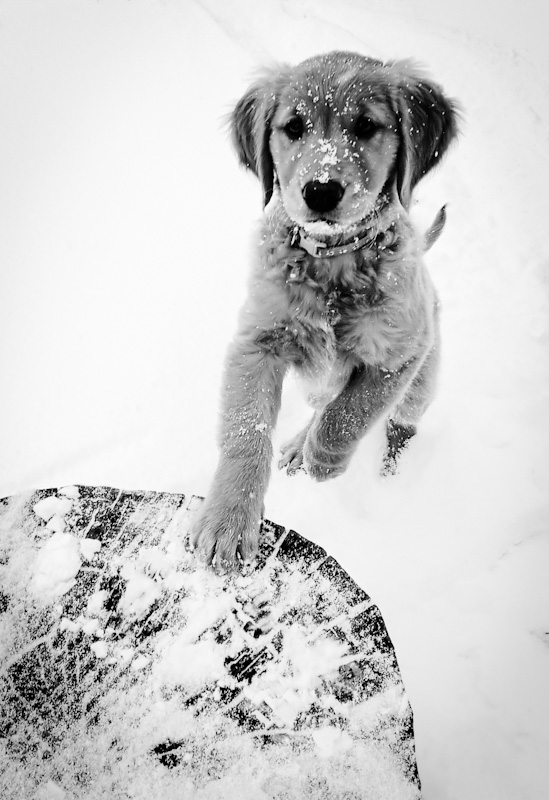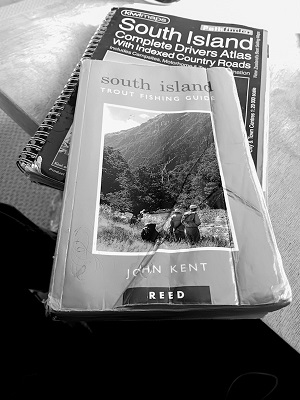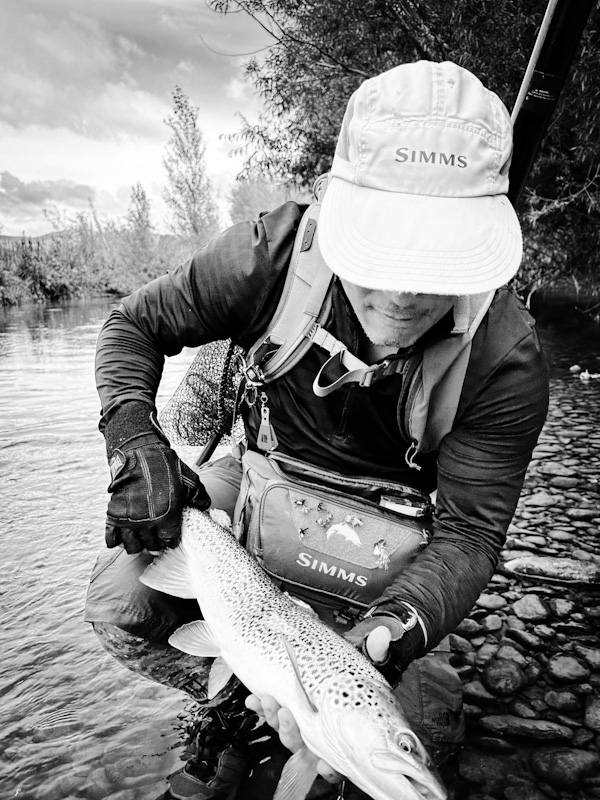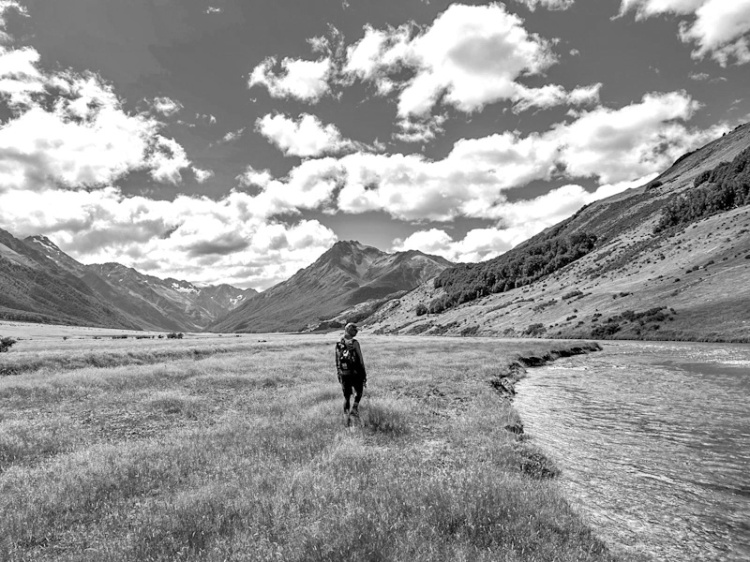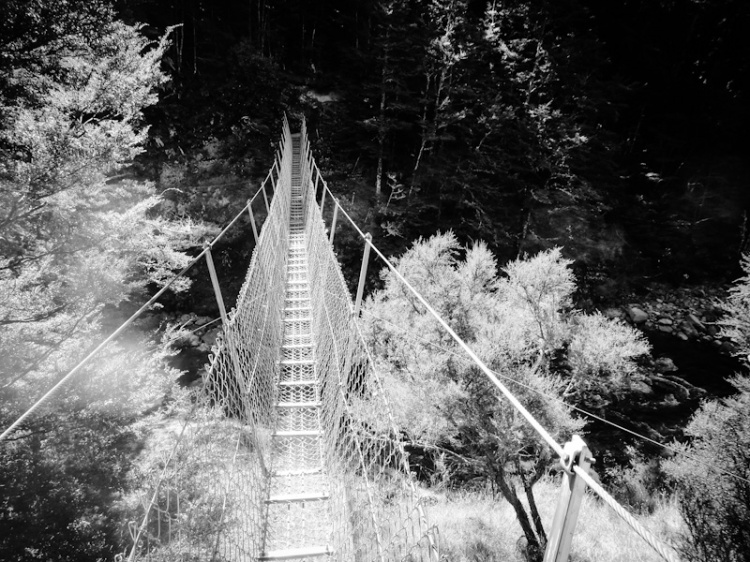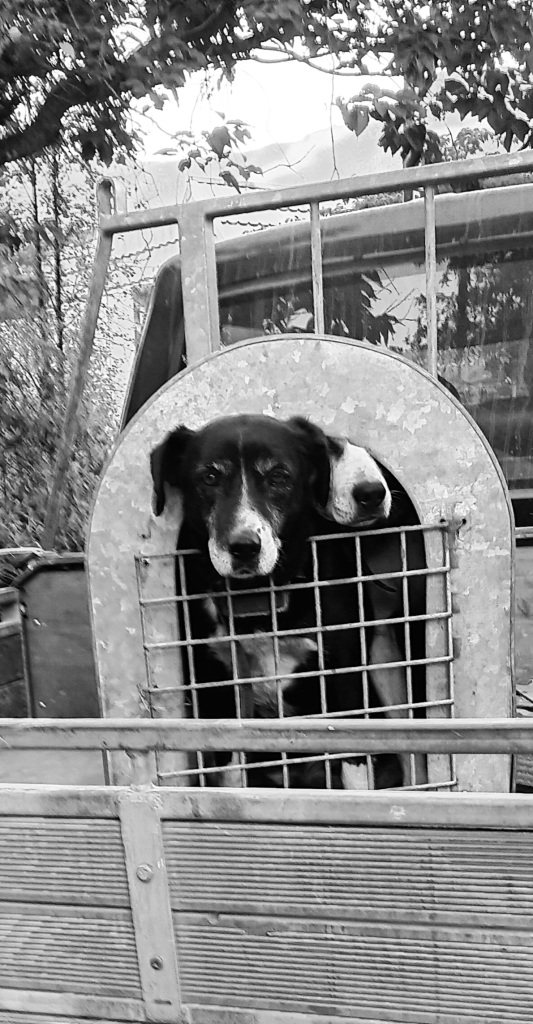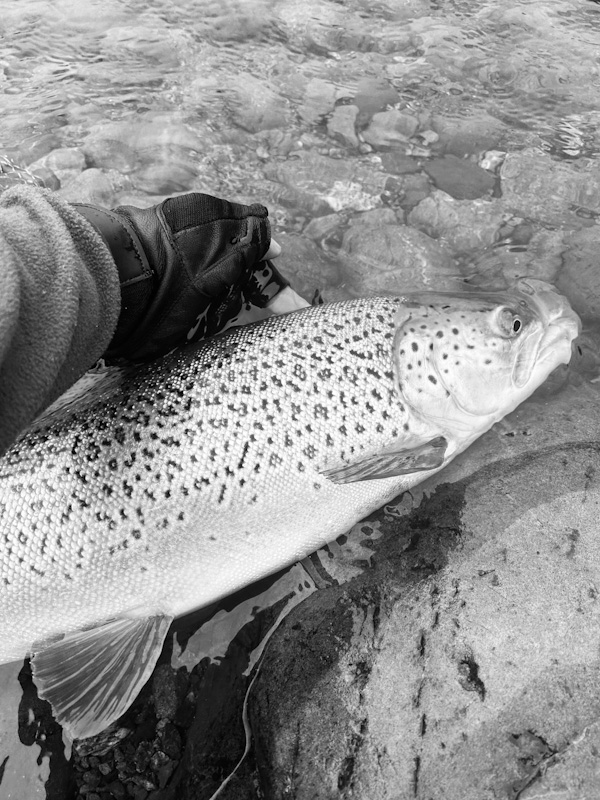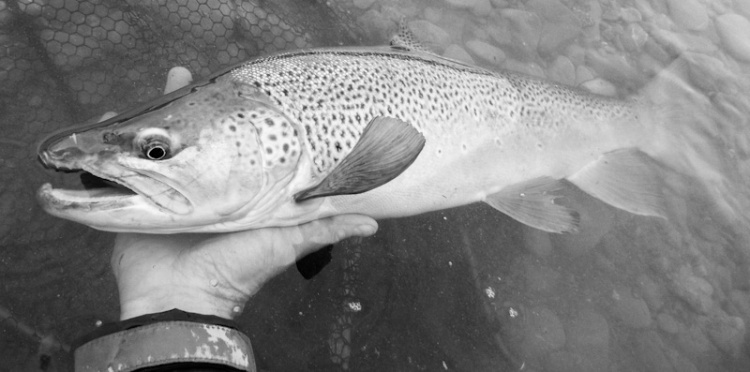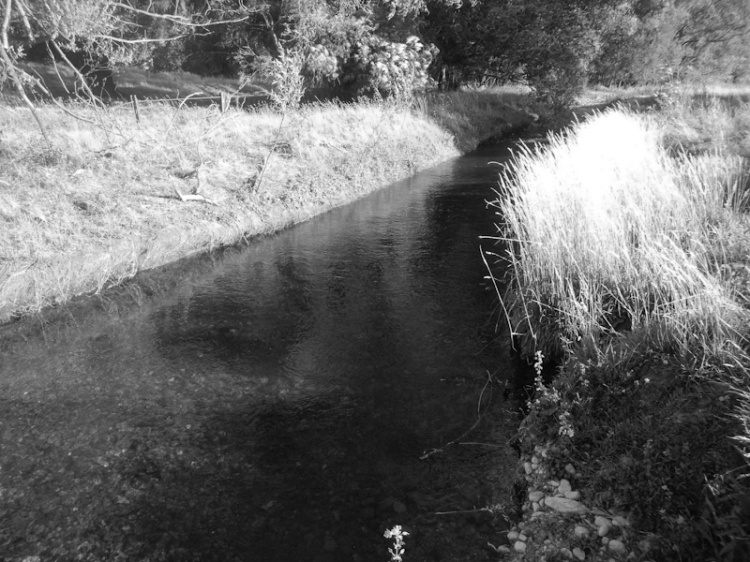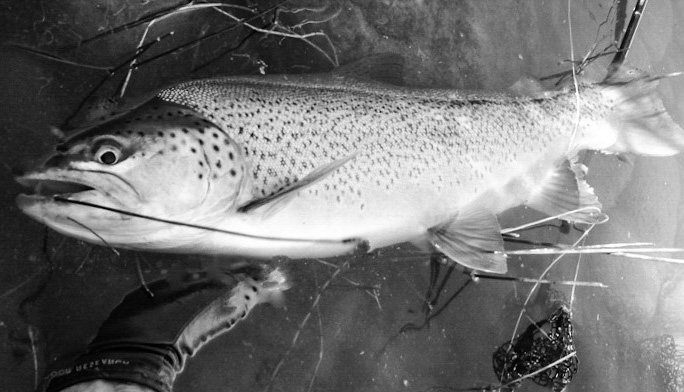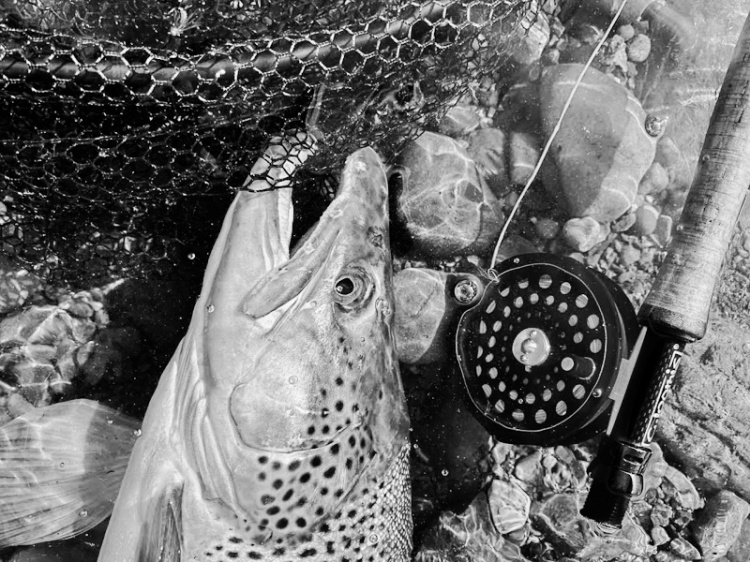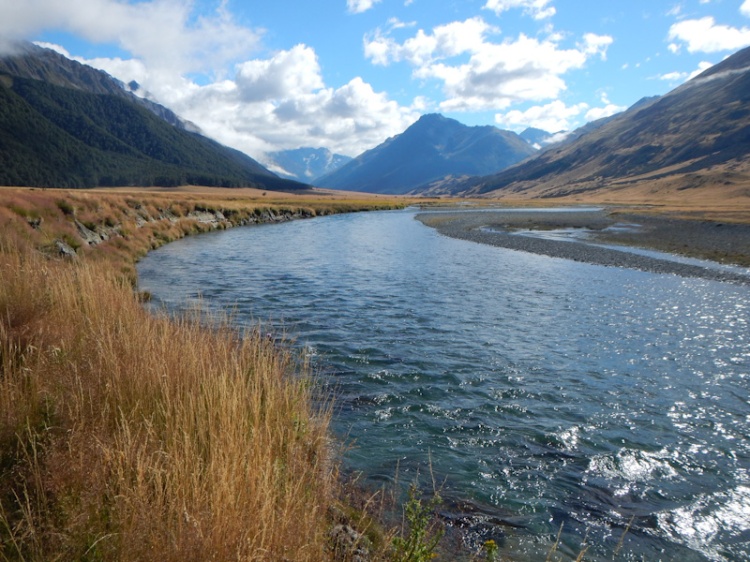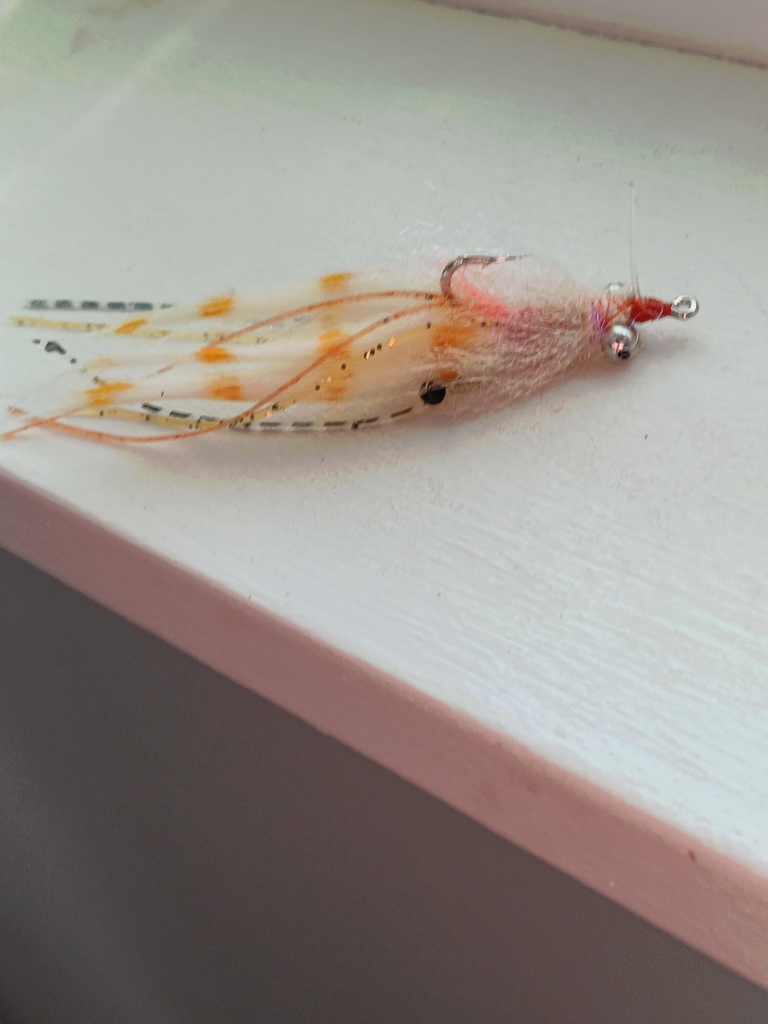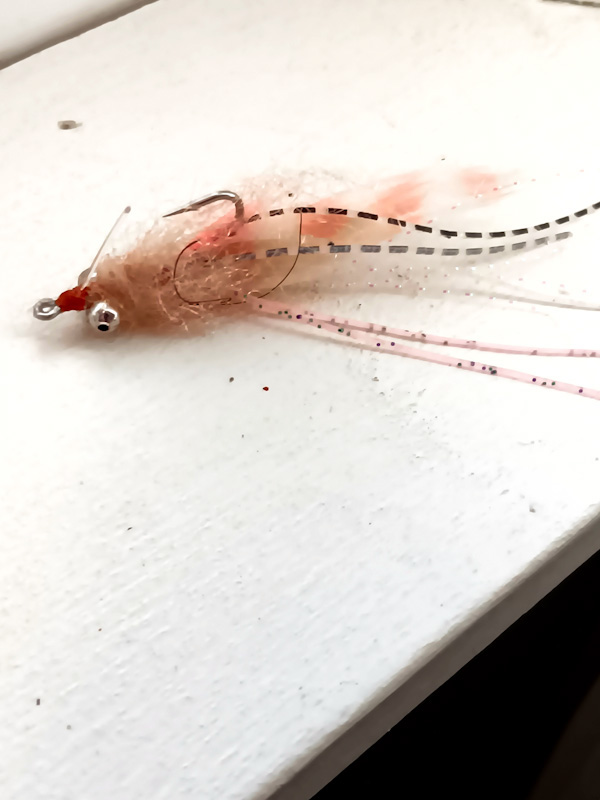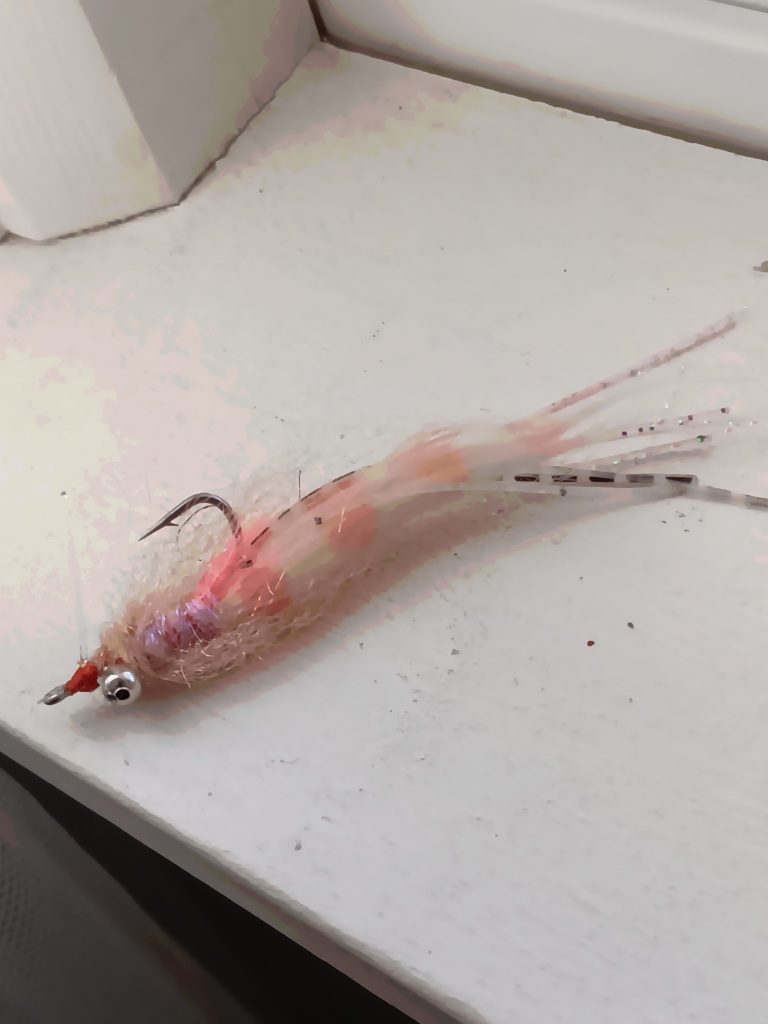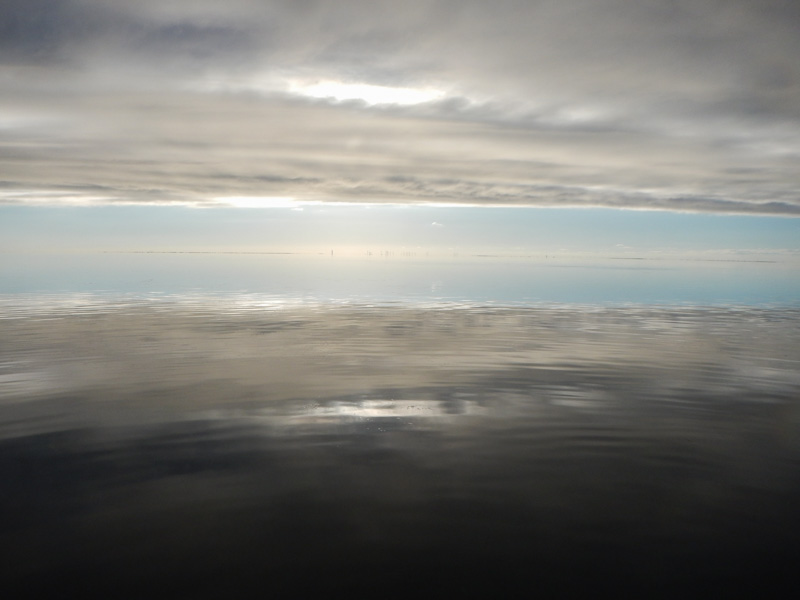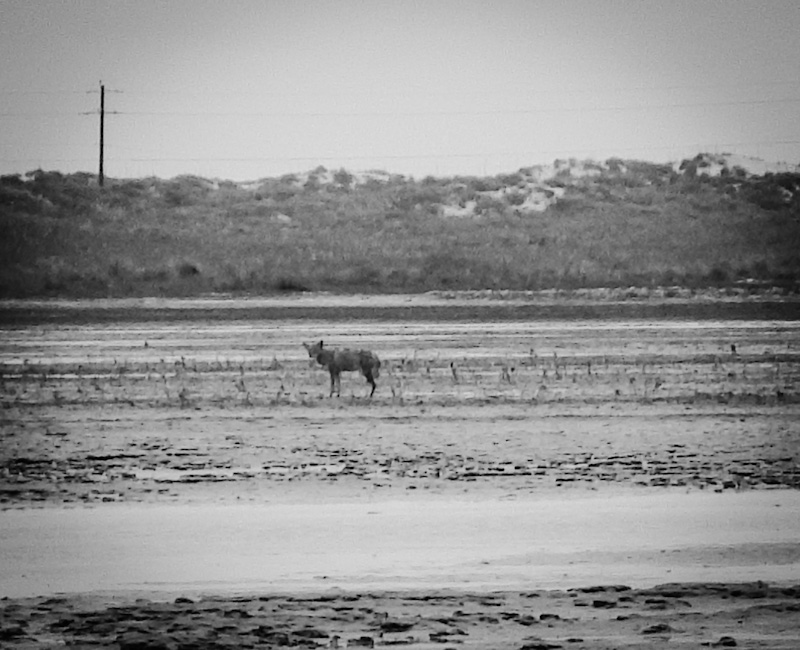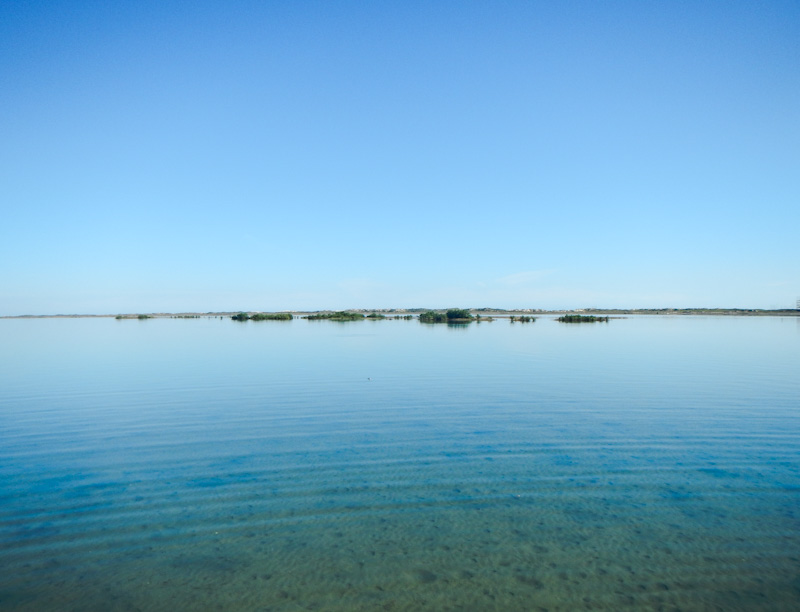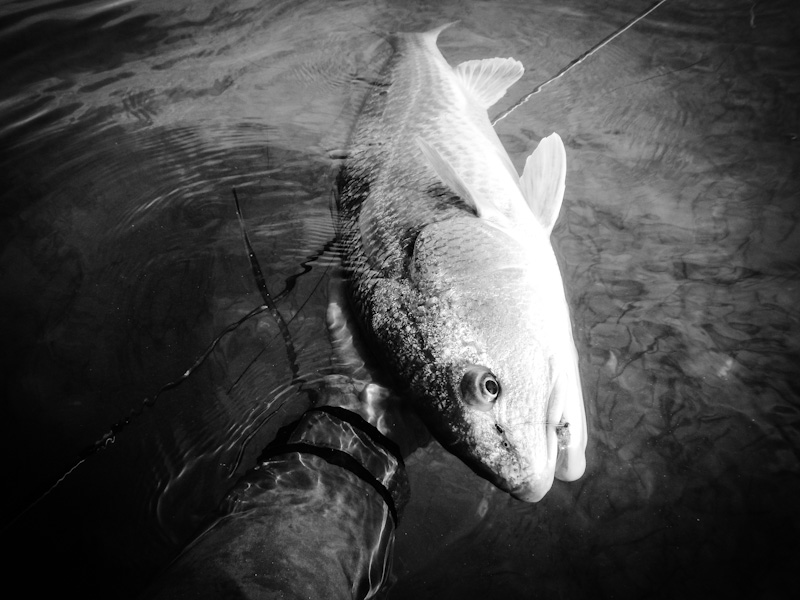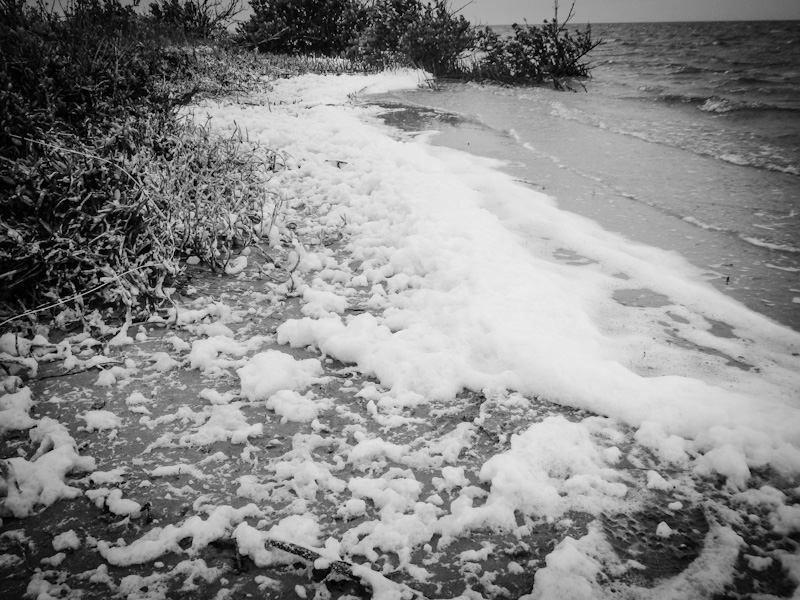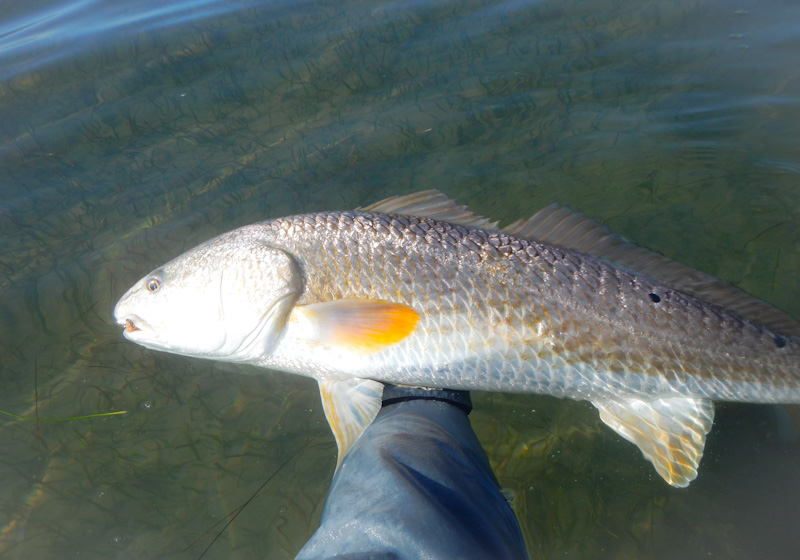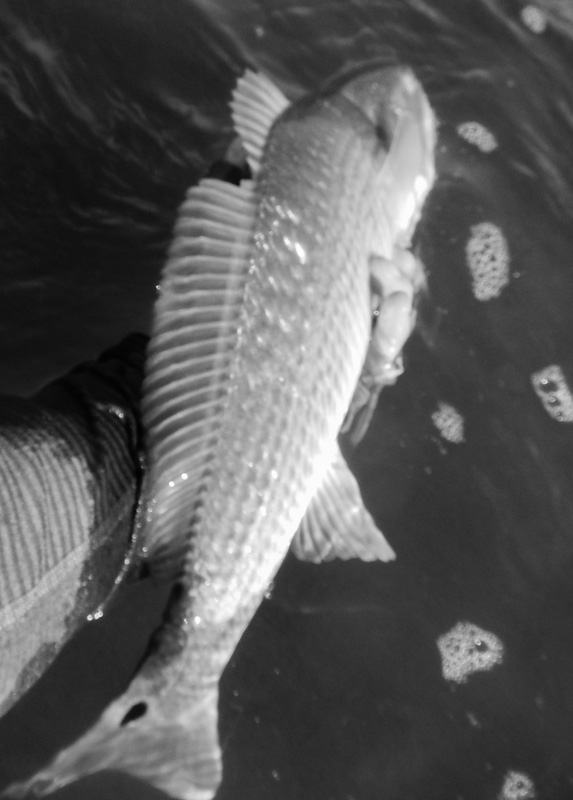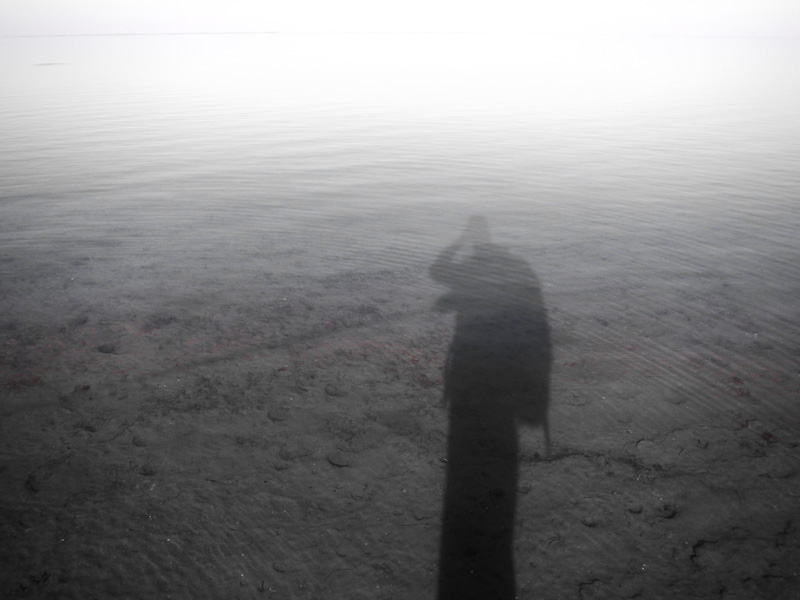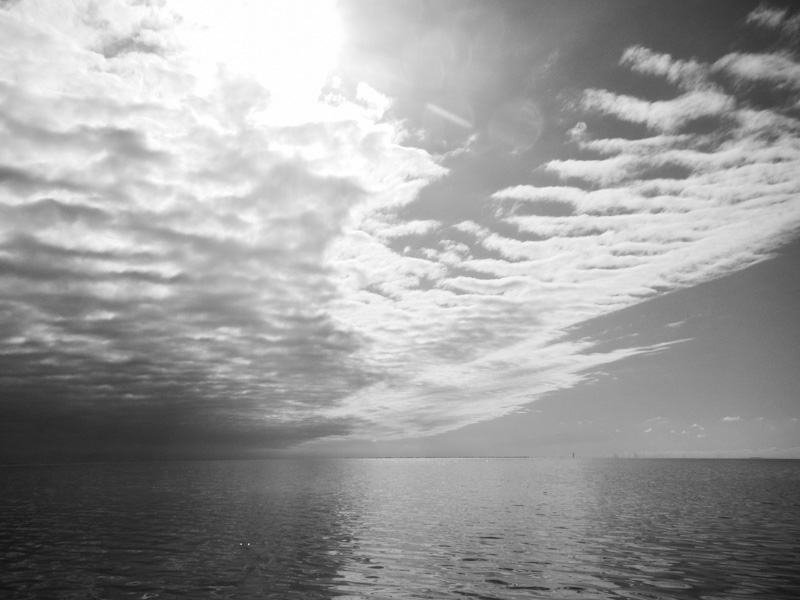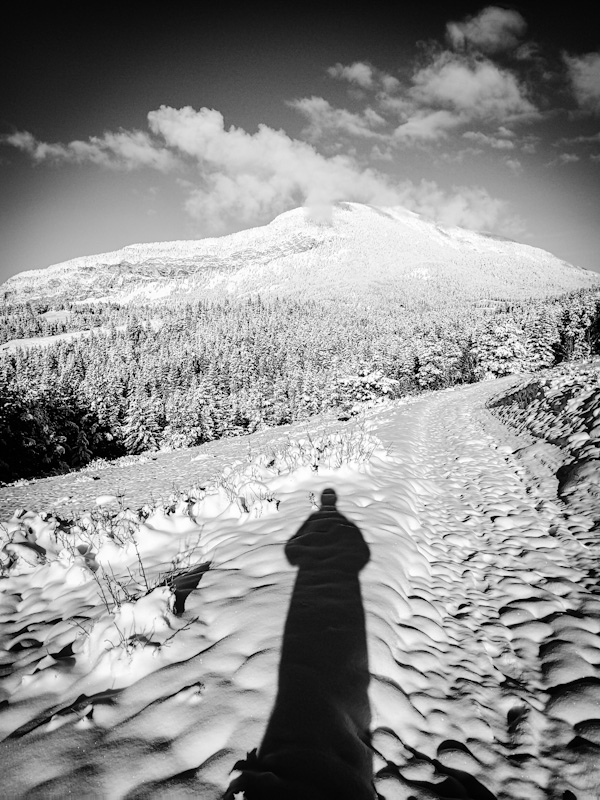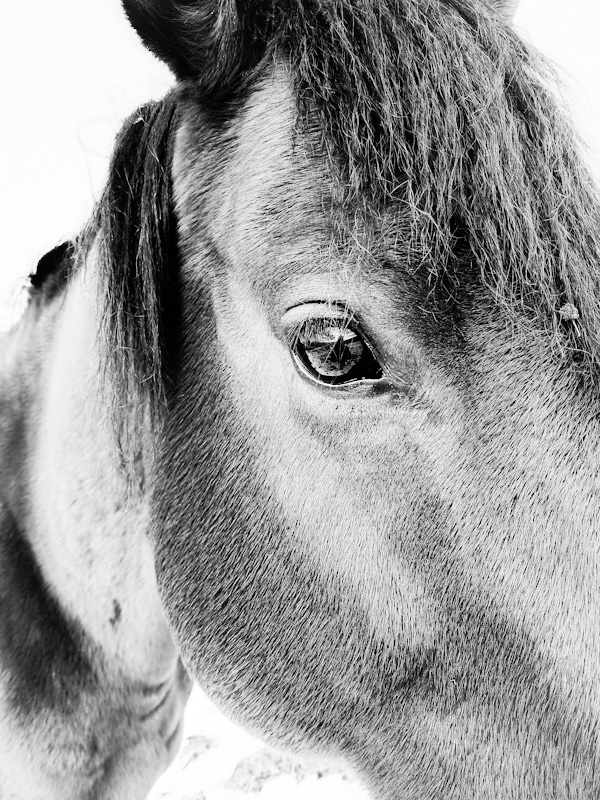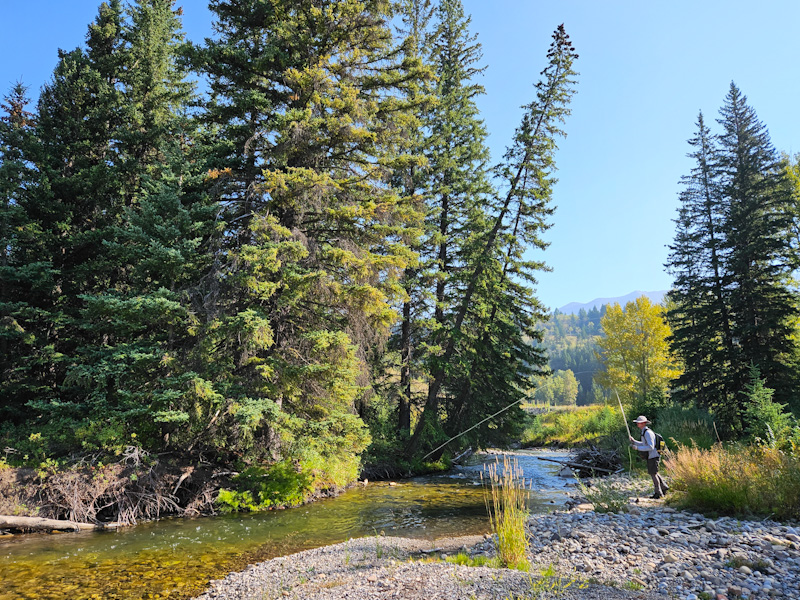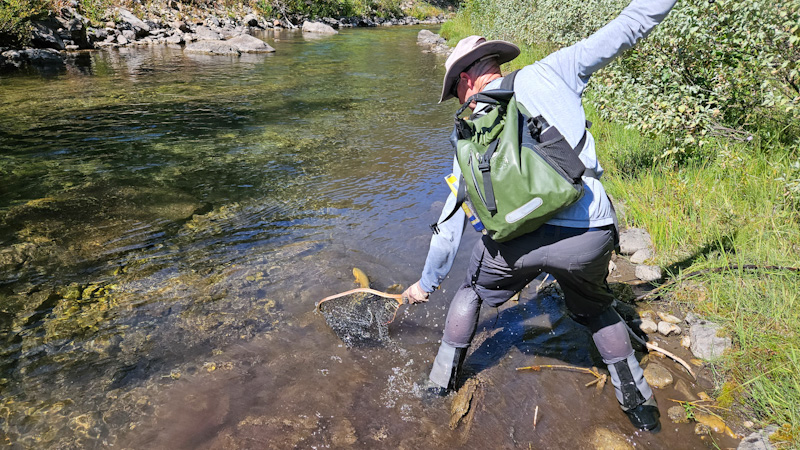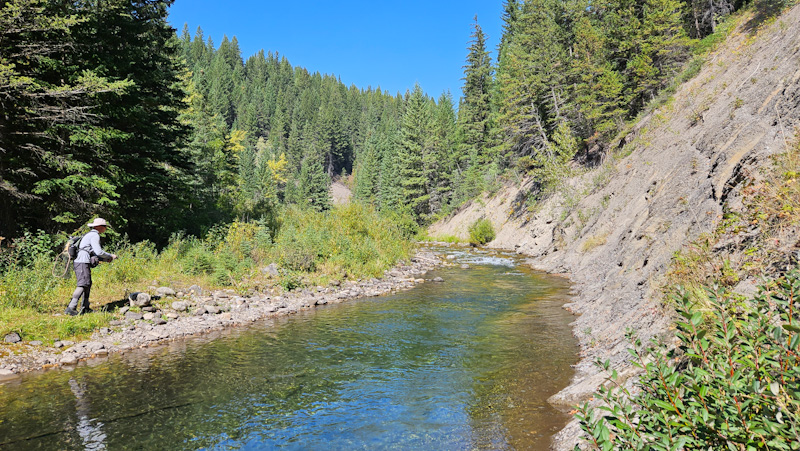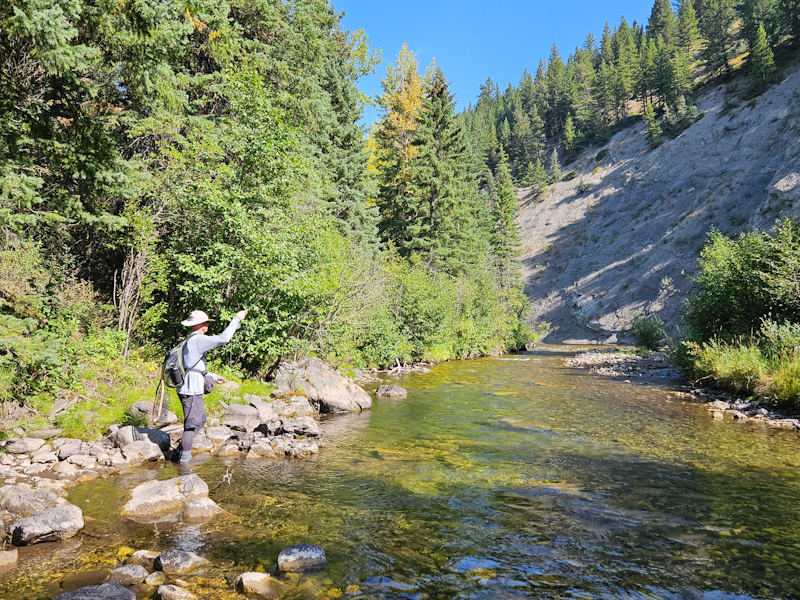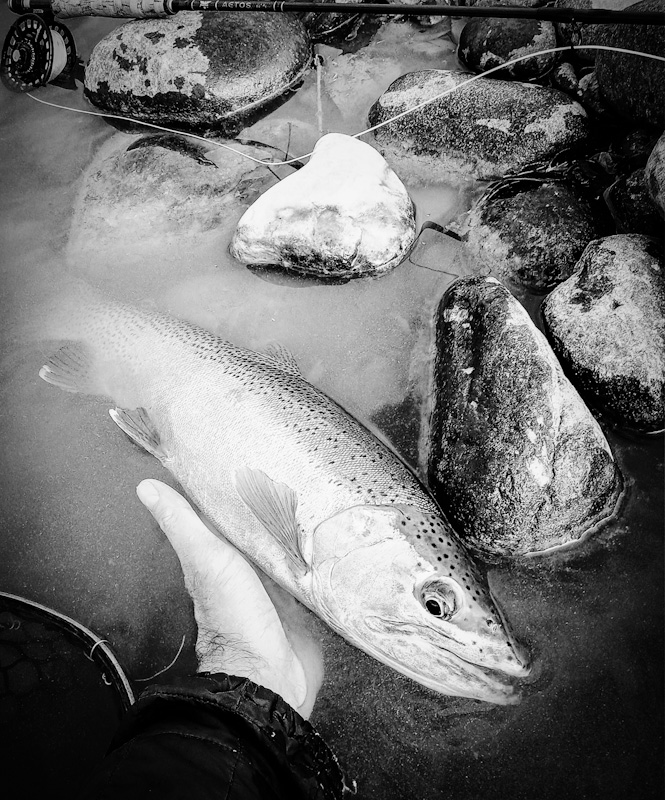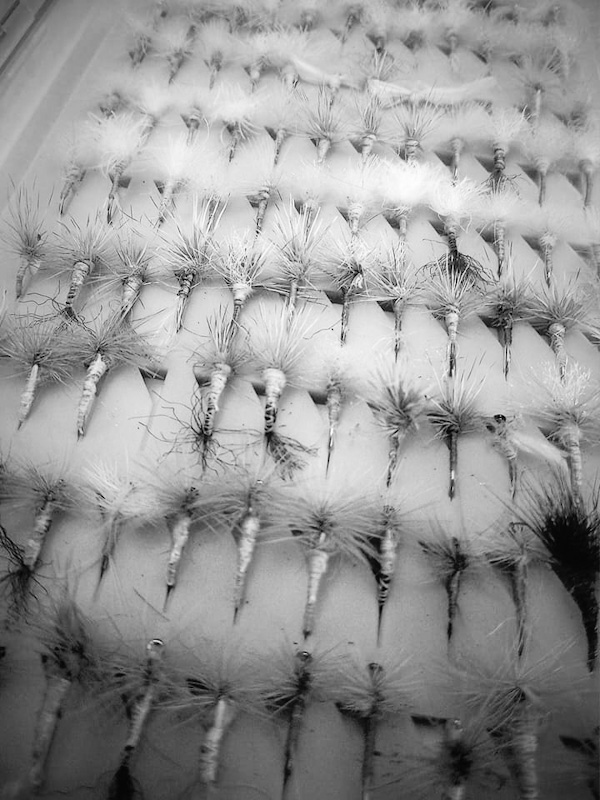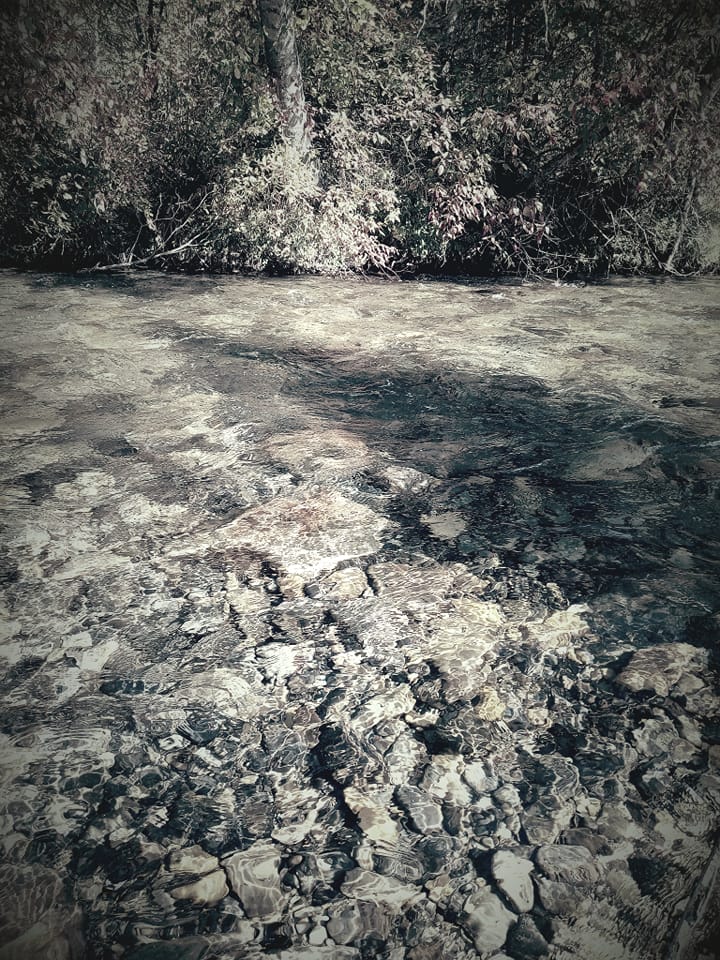Midges. Some dries and nymphs. Fairly small: size 20,18. Sometimes I tie smaller. On one of my favorite tailwater rivers in central Montana I’ll fish a midge dry down and across to a rising or bulging (midging) trout on a flat water section. If no response after a few drifts then I try a few other other patterns including some suspender types, etc. If still no success then I’ll tie on a lightly weighted Zebra nymph (plastic clear bead on head and a few wraps of wire on body to help it break the surface) just 3 or 4 inches below the dry. Then I go with the same presentation angle (down and across). If still unsuccessful then I try slightly twitching the dry and nymph (upstream movement) just in front of the feeding fish. Often this will elicit a response, sometimes on the dry but usually on the nymph which is hanging slightly below the surface and with the movement/ twitch may look like it is emerging/ rising in the water. Sometimes the movement catches a trout’s eye and it lunges for the impression (dry or nymph). Some of my best Springtime angling has been midge fishing in the morning in a protected area where the wind is light or non-existent and some fish are “up” on them. On those days I’m usually just hanging-out hoping for a good Blue Winged Olive hatch to begin in the afternoon. A few solid trout on Springtime midges is a great way to kick-off the season…
Author Archives: troutondries.com
Self-Guided Fly Fishing New Zealand-5th Trip
Sight-fishing in New Zealand is simply the best. Endless Rivers with clear water and robust challenging brown trout and some rainbows too. All you have to do on most flows is be willing to walk, sometimes significant distances, and search for them. You use your legs, and you use your eyes. If you are pretty good at spotting trout you’ll probably find one or two in a day, occasionally several. It depends on the river. Fish numbers on average tend to be low in comparison to home (North America). You have to cover water in order to find them but at the same time you have to go slow or you might scare the few fish that inhabit the water that you have selected. Choosing where to fish in New Zealand can be overwhelming as there is so much water: rivers, streams, lakes and ponds. In the past I’ve used John Kent’s book: South Island Trout Fishing Guide. Anglers consider it the Bible. Even though I have an older and well travelled edition (2002) I find its description of rivers and their fish populations amazingly accurate. There are newer (updated) editions which can be purchased and of course there is a lot of information online. Maybe too much…
The fish I encountered on most rivers were wary. This is often the case if you go late in the fishing season (as I did) when there has been angling pressure for over several months. The trout season in New Zealand is a long one: from October 1st to the end of April. One river I fished this year in the North Canterbury region had some of the most cautious/vigilant trout that I’ve ever pursued. Stumble or slip a bit when wading into casting position even in rumbling fast water 30 feet behind a fish and their lateral line would detect it. They’d respond by moving-up into the deep fast flow at the head of a pool for cover. Crawl down a bank in order to get behind a good fish and a rock rolls and careens off of another, even at great distance from the targeted trout, Adios fish! Slap your line a bit when trying to punch your fly into a fierce wind and fish gone…bye-bye! Unforgiving.
There was a noticeable absence of terrestrials on this trip, including Cicadas, even though it was late Summer, early Fall. I became aware of this as I spent a lot of time crawling on my knees and belly streamside in order to avoid detection while stalking fish. Getting trout to take a surface offering was at times challenging. Sometimes a strange New Zealand dry fly pattern called a Blue Blow fly or Blue Bottle fly did the trick. I also caught a few on beetles and ants but not consistently. On some rivers the fish were “locked into” feeding on nymphs. I saw very few mature mayflies or caddis on the surface in spite of angling a variety of rivers and rising fish were a rarity especially higher up on some flows (not unusual). New Zealand is always challenging. It’s why I come here to sight-fish. It’s the walking. It’s the hunt. It’s demanding. Each connection very special.
Some imagines. Some connections made by Roman, a friend, and I on a thirteen day self-guided angling adventure in beautiful New Zealand, South Island…
Some color:
On MLK day
Bonefish guide, Ansil Saunders, and Martin Luther King (MLK)… an inspirational connection made on Bimini Island, Bahamas…
shrimp flies
“Land silent, run shallow”
Fly fishing adventures always inspire thought and more tying; more patterns. A recent saltwater fly fishing trip for Redfish motivated these shrimp creations, size 4 hook, medium-sized bead chain so fly pierces the surface but is still relatively light and not too loud when entering shallow water. I also tie some with small-sized bead chain (lighter) and no bead (no added weight) to land almost silent and to run shallow, in just inches of water…
snow walking
Slow walking the sand…
Each morning I’d take the beach road north out of town almost to where it ends. I’d park my rental and then make the twenty to thirty minute hike over the sand dunes and then on to the broad tidal zone leading to the Bay/Laguna. The grassy sections of the dunes held sand flies so I passed through quickly. The wide open tidal zone never had biting insects, nor the Laguna. This zone was either flooded or dry depending on the tidal cycle and wind direction. While walking I’d look for scavenging Coyotes and the small local Deer. I always wonder how they survive on the long thin band of sand they call home. I was on a barrier island along the Gulf of Mexico.
Once at the edge of the Laguna/Bay I’d pass through a thin line of mangroves and then enter the water. The bay in front of me was one big clear sand flat and shallow, just inches to calf-deep for miles. The bottom was a light tan color and firm. Most areas were fairly barren. Some spots had sparse fine shoal grass growth. Much, much further out there were thicker weed beds. Redfish at times showed-up and prowled the sand shallows in search of food: shrimp, crabs, sea worms and other things. It’s a perfect location to look for them. It’s ideal sight-fishing water. It’s why I made the long journey here.
I’d always arrived at the Laguna early. The sun, if it was out, was usually just cresting the high dunes to the east and as I walked out into the shallows it was at my back. I’d wade westward as that’s the direction that I’d see best. On good weather days the visibility improved and expanded as the morning progressed and the sun climbed the sky. Fishing skiffs were always skimming northward in the mornings, sometimes a mile or more away. I’d always hear them before I’d see them. Several minutes later their boat wake would reach me and push up against my legs. Energy travels a long distance in the ultra shallow Laguna. Boat energy, my energy. A reminder to wade cautiously.
The sand shallows always looked promising, especially on the calmer, sunny days. On this trip, however, most days were not sunny. The long range weather forecast looked favorable before I booked my trip and left home. However, weather prediction is often imperfect and seaside climate can be unpredictable and ever-changing. Out of fourteen angling days I had three full sun days. Not a great percentage. However, you have the angling day that you wake-up to. Cloud cover, high wind, some occasional light rain, it didn’t matter…I layered-up and waded the shallows and searched for Redfish. I wore waders during inclement conditions. I happily wet-waded on the warm sunny days.
Sight-fishing in cloud glare and wind is always challenging. At times it was impossible to see beyond two or three rod lengths. In the tough conditions I caught a few but missed and spooked several fish. On many days on this trip and in the past, I left the Laguna late afternoon frustrated with not being able to see well. I knew great fish were coming in on the sand daily but I had little chance of spotting them. But that’s all part of any angling trip. You have to surrender to and accept what you can’t control, hope things change and appreciate it fully when it does. I tried to do that.
When the sun did appear it illuminated the sand. Everything became visible. Everything was revealed. It was confirmation as to why I had come here. It was like flicking on the light switch in a dark room. That’s when there was opportunity. That’s when I had a chance to spot a good one. I’d look for shape; a shape that contrasted with the light colored bottom and above all I watched for movement. Movement catches your eye. Movement gives them away. If I managed myself well when the light was good: stayed alert, concentrated intensely, methodically scanned the water, moved slowly (all the shallow water tactics), then I knew I had a chance to spot one. Then it was up to me to make a good cast. In the clear twelve inches of water my fly impression needed to land “near” the Redfish but not “on” it. Too close and a Redfish in skinny water and on high alert, would bolt.
On a good day, when I could see well, I’d always spot Redfish in the sandy shallows. Never many but some. In high glare windy conditions less. Sometimes I’d see none. All fish spotted on this trip were good ones. I’ve heard of great numbers of schooling and tailing redfish on the richer weed thick westside of the bay but I’ve never witnessed that on the eastside sand flats when I’ve waded them in late Fall and Winter time. Maybe it is just the time of year that I come here. There were no surface disturbances to give their location away. When I’d spot them most were on the move; combing the sand.
Days passed quickly on the sand. By mid-afternoon I’d see best wading eastward, back to shore. By late afternoon the sight-fishing day came to an end. I’d hear the skiffs returning from their journey north. Once again, their wake managed to find me. Some had music blasting: usually heavy Rock, sometimes Rap, sometimes bar brawling Country. I guess song selection was dependant on the age of the captain. I never heard Sinatra.
It was my third visit to the barrier island. I’ve now spent a total of two months sight-fishing the sand flats. It’s still all new to me: Redfish behavior, their environment, the tides… that’s good. It’s a new angling journey. When I review things at the end of each trip I’m reminded how weather always rules the day and how demanding but rewarding ultra-shallow saltwater fly-fishing can be when on foot. The Laguna is as intriguing, spirited and challenging a fly fishing location as anywhere I’ve been. When the sun lights-up the sand it is simply beautiful and mesmerizing out there, and full of possibility.
All redfish were released safely back to the Laguna..
POSTSCRIPT
Prior to this trip I had read that a Coffee/ Fly Shop (Los Pescadores Coffee and Outfitters) would be opening on the island probably sometime in the second half of 2024. Their website said that although their storefront was not open yet, an angler could order online and have items mailed, or if in town arrange a curbside pick-up. I had tied many flies for my trip but wanted to purchase some regional redfish patterns, so I arranged a pick-up. I got to meet the owner of the business, Daniel, and the future fly shop manager and guide, Alex. Both super guys. They showed me the space they had rented, spoke about their plans for the coffee and fly shop and overall business. They had a great fly selection and offered angling and location tips on the region. Alex has a skiff, guides and catches impressive fish. Whenever I visit an angling destination it’s a bonus to know there is a Fly Shop nearby. I’ll drop by again. Here is the link: https://www.lospescadores.com/
Season’s End
a special day
I had the good fortune in late August to be generously treated and guided by Vic Bergman to a day of angling on an unpressured Cutthroat stream. Vic is the owner of the Crowsnest Angler Fly Shop (see link below) in the Crowsnest Pass , SW Alberta. He has owned the shop for 30 years and guided in SW Alberta and SE British Columbia for 40 years. He is also a photographer (see 2nd link). The creek is one of his favorites. It is as pure and clear as any trout stream on the planet. Vic knew several access points and showed me a series of stunning pools where he anticipated trout would be rising, and they were. All I had to do was make the cast. A special creek and day. Many thanks to him for access to the stream, the day, the exceptional photos and guiding. It was the highlight of my angling season…
All photos by Vic Bergman.
https://www.crowsnestangler.com/ ; https://www.vicbergman.com/
Pale Morning Duns in October
It’s late season and small dry fly angling is an afternoon event on one of my favorite prairie tailwater rivers. The predictable mayfly hatch at this time of year is Baetis/Olives. On the unique river I have been visiting, however, the Pale Morning Dun’s (PMD’s) of summer often come-off through September and even into October, along with the Olives and sometimes a few Mahoganies. Each river has its story…
Some images of trout caught this October, on summertime PMD impressions.
Light
“Capturing Nature in its essence is not easy- your work becomes a dance between light and weather…”
Annie Liebowitz, Photographer
Cold mornings. A trace of snow up high. Leaves are dropping. The Larch trees are golden and glow when the sunlight finds them. Bull trout are spawning in the creeks. It’s Fall. There are still a few more weeks of dry fly angling left. Maybe a little more. It’s the best time of year to be on a river. The angling crowds are gone. The campers have thinned out. It’s real quiet out there. And the afternoon light is rich. And exceptional dry fly fishing is all about the light…


